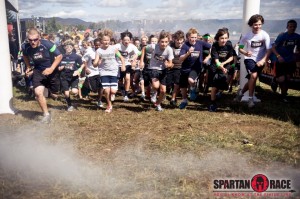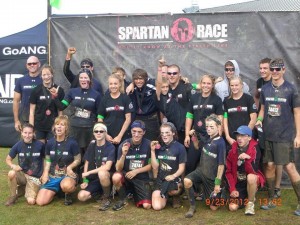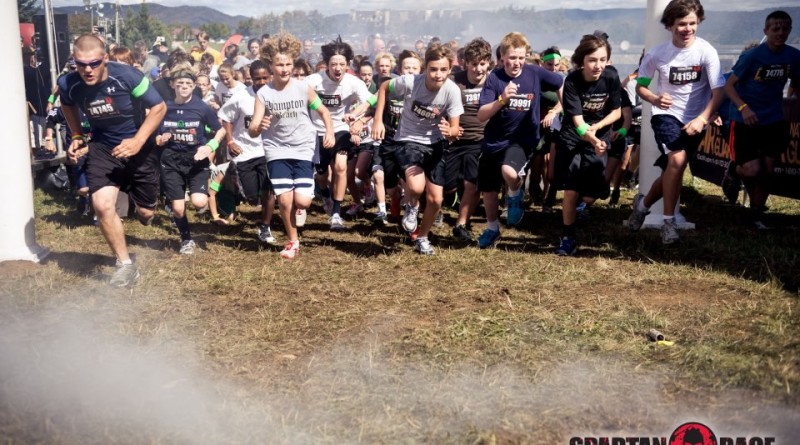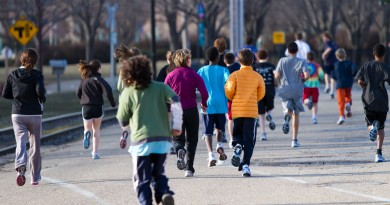Obstacles to Fitness | 18 & Under Nov. 2012
 On Sunday, Sept. 23, nearly 200 teenagers from all over New England braved the chilly midday air at Killington Mountain Resort to tackle a seemingly impossible mission: The Spartan Race Vermont High School Challenge. The four-mile journey consisted of mud, barbed wire, bone-chilling water, fire trenches, and twisted-rope climbs. Sponsored by Spartan Race, a globally recognized leader in obstacle racing, the 13-mile course, dubbed the “Spartan Beast,” tested the abilities of athletes from around New England.
On Sunday, Sept. 23, nearly 200 teenagers from all over New England braved the chilly midday air at Killington Mountain Resort to tackle a seemingly impossible mission: The Spartan Race Vermont High School Challenge. The four-mile journey consisted of mud, barbed wire, bone-chilling water, fire trenches, and twisted-rope climbs. Sponsored by Spartan Race, a globally recognized leader in obstacle racing, the 13-mile course, dubbed the “Spartan Beast,” tested the abilities of athletes from around New England.
Fair Haven High School’s 15-year-old Austin Beauregard recounts his own Sunday race adventure. “I had this feeling overwhelm me, because I’ve been training and waiting for this for months. I went at a full-out sprint, and then I got to the hills and thought ‘Oh boy, here we go!’” The Vermont High School Challenge was the first three miles of the 13-mile Spartan Beast. Due to the difficulty and the steep incline of the course, the average time to complete the four-mile challenge was an hour and 40 minutes. No matter how grueling the race may seem, completing the challenge yields immense personal satisfaction. For Austin, he cannot wait for the next race.
“The part I enjoy most is the challenge. I’m really looking forward to the obstacles I couldn’t do.” Participating on a team, or as individuals, the teens made a collaborative effort to finish the race. “One girl got down on her hands and knees to let someone else climb on her back and over a wall,” Austin says.
Because organized obstacle racing is fairly new to high schools, Fair Haven High School principal, Brett Blanchard, hopes students like Austin will help promote participation at the school.
Blanchard, along with Spartan Race coordinator Jen Macari, started the obstacle course racing program at Fair Haven High School. The new program is an informal club that meets regularly. They started the program because they wanted students who didn’t participate in “traditional” extracurricular sports to “find their own kind of adventure,” Blanchard says. The goal of Fair Haven’s new program is to inspire kids to engage in lifelong fitness. Blanchard believes that is why obstacle racing is perfect for high schools nationwide. “All you need for obstacle racing is a good pair of shoes, a shirt, and some shorts,” Blanchard says. The low budget makes an obstacle program a readily available option to get kids involved in fitness.
 Additionally, this type of physical conditioning is conducive to participating in a variety of life sports and does not require specific skills. When the club meets, Spartan Race provides a Workout of the Day, or they travel to Benson, Vermont, where they practice at the Shale Hill Adventure Course. Shale Hill is an all-purpose recreational facility that offers activities from paintball to snowshoeing.
Additionally, this type of physical conditioning is conducive to participating in a variety of life sports and does not require specific skills. When the club meets, Spartan Race provides a Workout of the Day, or they travel to Benson, Vermont, where they practice at the Shale Hill Adventure Course. Shale Hill is an all-purpose recreational facility that offers activities from paintball to snowshoeing.
“Obstacle racing isn’t skill-specific like other sports. It is more fitness based. If you’re in good health, you can finish a course. Building grip strength will help you for a multitude of hanging, climbing, or swinging obstacles. Learning how to climb a rope using your legs and feet to lock you in place will help you climb when back strength hasn’t been developed yet,” Macari explains. Macari is the assistant trainer for the Fair Haven program and works for Spartan Race, following each event across the country while presenting and connecting schools with the program and local races.
Obstacle racing could not be more relevant for today’s youth. As high schools nationwide battle obesity, “nature deficit disorder,” and more sedentary teen lifestyles, obstacle racing is a remedy as well as an alternative to joining the soccer or hockey team. Recently, the Vermont Principals Association approved obstacle racing as a sport. The benefits of obstacle racing extend far beyond physical results: racing improves self-esteem and motivation. Because everyone who participates in obstacle racing is equal, the only competition is with yourself.
“It’s not at all a competition to win. It’s a competition between you and yourself to become better. And after the Spartan Race, you are a completely different person,” Austin says. The perspective the race gives a person is evident in Austin’s pride with his achievement. Another benefit of obstacle racing is mental endurance and discipline. “Racing gives kids a sense of control, which helps build motivation skills,” Blanchard explains. He hopes obstacle racing will become a national high school activity and lead to lifelong fitness practices.
“There are a lot of hoops and hurdles to bring obstacle course racing into schools,” Macari says. “But even if a facility cannot be built on property, training can take place anywhere. It’s about getting away from our sedentary lives and starting to run, climb, jump, and play again.”
If you would like to learn more about school obstacle course racing or Spartan Race, contact Brett Blanchard at Fair Haven High School (mrbblanchard@gmail.com) and Jen Macari (jenniferm@spartanrace.com).


